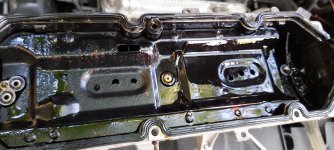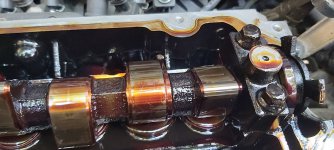Ticking issue update - I processed ticking sound recorded on my phone and there is appr 5 ticks per second. So if my iddle (without AC) is 700rpm (by ECU), that means 700/60 = 11.66 rounds per second on crankshaft. But camshaft is roatating 2 times slower, = 11.66/2 = 5.83 rounds per second. That match my sound measurement.
So ticking is defiinately not from pistons, which is good. Now there are 3 possibilities:
1, sound is coming from camshaft lobe vs shimm on some valve (but I checked shape and status of cam lobes + valve clearances + proper oil distribution)
2, sound is coming from hitting piston with some valve (but there's no ticking on cold engine, so it can be caused by point 3,)
3, because there was general head repair (by someone, because I saw new shiny exhaust valve on 3rd cylinder for example), somebody did some mistake - maybe added wrong (weak?) spring, or used new valve from different material which changes it's lenght too much when getting hot
So my tip is: wrong new valve type used. On cold is OK, but once it gets hot, it's lenght became too big and A, is hitting piston or B, causes some problem between cam lobe and shimm
 Because wrapping will also hold heat inside header. It can reduce heat in space around engine, but it holds that heat inside. And that may cause bigger damage than I can imagine
Because wrapping will also hold heat inside header. It can reduce heat in space around engine, but it holds that heat inside. And that may cause bigger damage than I can imagine




